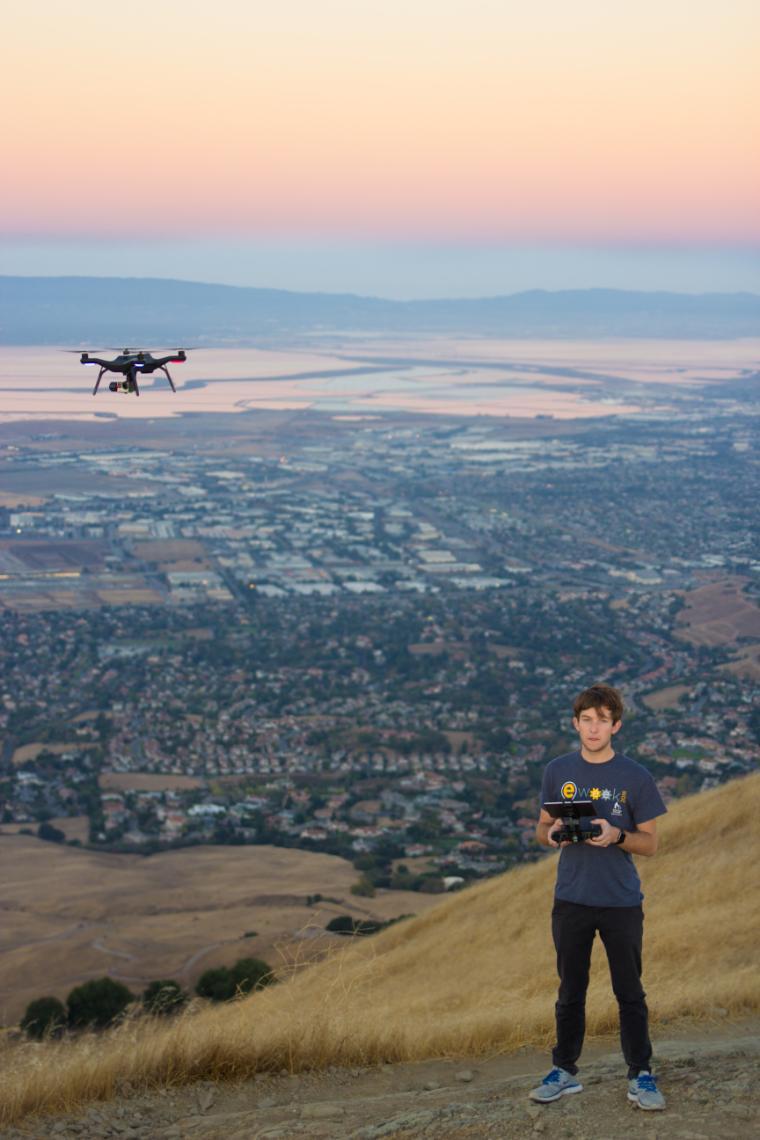
Diving Into the Deep End
Meet Daniel Webber ’19, dynamo. He’s a freelance photographer and videographer specializing in sports and aerial photography whose work has appeared on television in an Emmy-nominated series, on The Weather Channel, and on The Nightly News with Lester Holt. He’s also seizing a great opportunity by taking a quarter off from his electrical engineering studies to intern as a hardware engineer at Apple. He thinks fast and talks fast—and when an idea strikes? “When I want to do something, I want to get to it, and I’ll do it,” he said.
So after his freshman year, it struck him that he wanted to try his hand at research. He applied to be a student researcher in UC San Diego’s Engineers for Exploration and was accepted in the 10-week summer program, charged with improving the range of an unmanned aerial system (UAS) platform used to track tagged animals with radio collars. “While the system has been deployed internationally, the detection range wasn’t suitable for researchers. I worked on the hardware to design new antennas that are built for the correct frequency. I was always interested in radio technology, but taking on this work was like diving into the deep end of the pool for me. I had taken no formal class in radio-related frequency or radio magnetics, but I’m always pushing the boundaries of what I know I can do. I had to learn how to build the system and then how to technically evaluate it.”
Working on his own with just weekly check-ins with the project principal investigators, Webber took the plunge. The result: He was able to benchmark several software defined radios (SDRs) to determine which was most sensitive, and he added a low noise amplifier to the platform, improving detection range while minimizing noise. His advisors encouraged him to write a paper. “I had never written a technical paper in my life, but I just figured this is the best time to do it so I’m going to try. At first I didn’t think what I had done was significant enough to write about, but my PIs were in strong disagreement. As I started writing about the work, I discovered it was novel enough.” Others agree. His paper was accepted to the IEEE Conference in Research in Networking and Systems. He also presented his research at the Council on Undergraduate Research NSF Poster Symposium in Washington, D.C., and gave a talk in January at the National Workshop for REU Research in Networking and Systems.
But applying his research in the field gratifies Webber most. “I got to meet the people from the San Diego Zoo conservation group who will be using this technology during their spring season deployment to the Cayman Islands. A big end goal for me is that I would not be researching just for research sake. This is actually going to someone who can use it, and that feels great. The whole experience was really fun. It showed me that grad school is definitely in the picture now. I’d love a mix between that and working in industry. SCU’s five-year combined BS/MS program is super interesting,” he said.
“Mostly, I just feel really fortunate that my non-career interests and my career came together this way. To do something you really like and also like what you love learning about is so cool!”
Daniel Webber takes his system out for a test run. Photo courtesy of Daniel Webber.